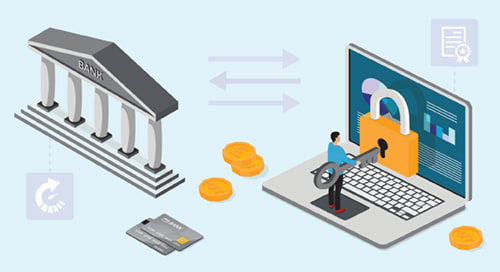The open banking playing field is set: consumers want to move around their financial data so they can gain utility out of it. For decades, screen scraping has been the method of choice for enabling data exchange with third parties. But when you look at the defensive and offensive sides of this method, it raises red flags for banks, fintechs, and aggregators that point to the need for an alternative approach.
The defensive screen scraping lineup
X Consumers need to share their banking account credentials
X Delivered capabilities must continue to work when UX or APIs are updated
X Computing hardware power needs to serve one-third of the customer traffic
X Need to determine whether an end user is a malicious actor or an authorized person
The offensive screen scraping lineup
O Want to connect securely with other banks as part of the larger ecosystem
O Focus on discovering new and innovative ways to provide financial services
O Facilitate more data-sharing mechanisms that boost customer satisfaction
O Generate new streams of revenue from newly delivered financial services
The red flags of screen scraping
🚩Enablement of proprietary connections for nearly 15,000 data endpoints isn’t scalable
🚩A lack of interoperability makes partner onboarding and shared data use more complex
🚩Poor data hygiene can cause incorrect data fields to be pulled in and used for decisions
By contrast, the open banking playbook offers common standards to drive data exchange via APIs – no screen scraping needed.
Consumers and banks get the same utility out of financial data, but with greater efficiency to save costs, simplified compliance to reduce risk, and streamlined scalability to power revenue opportunities for the future.
Watch the webinar to take a closer look at what you can do to minimize screen scraping risks.













